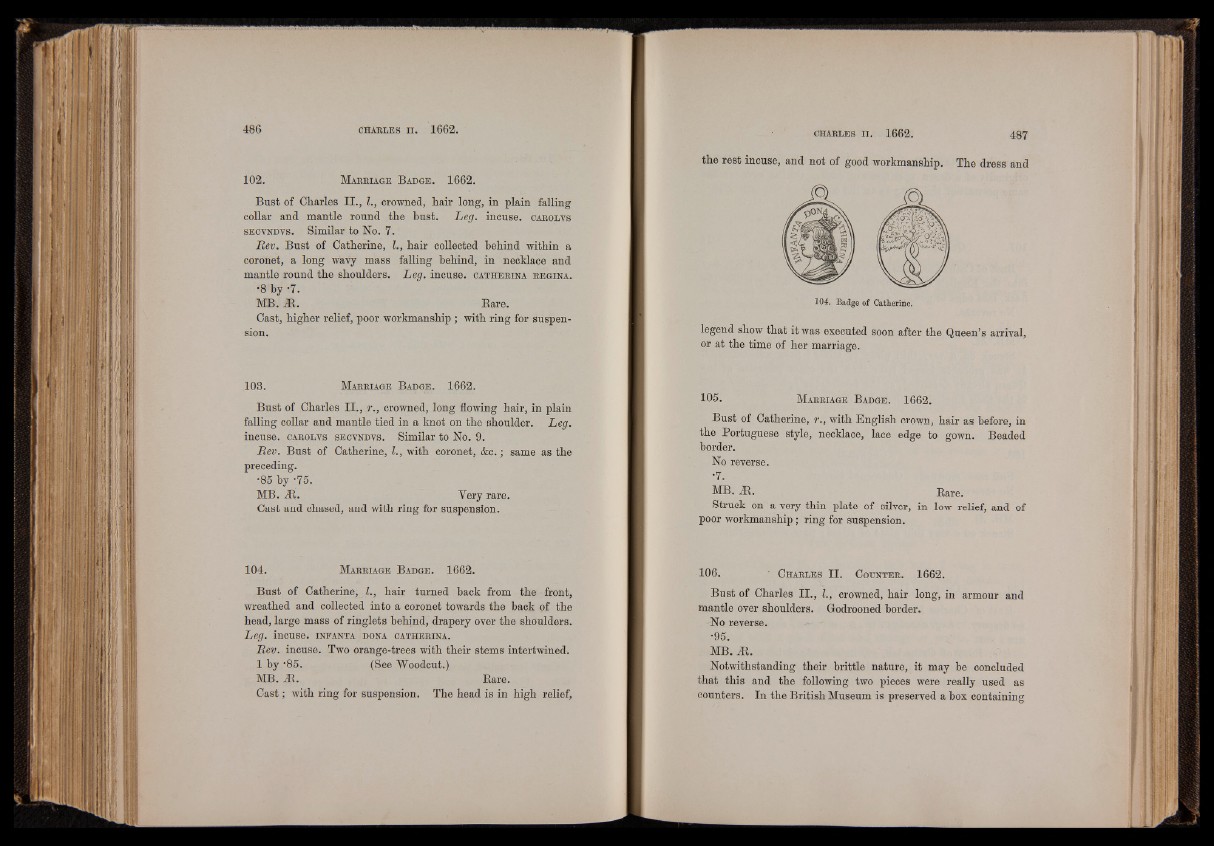
102. M a r r ia g e B a d g e . 1662.
Bust of Charles II., I., crowned, hair long, in plain falling
collar and mantle round the bust. Leg. incuse, carolvs
s e c v n d v s . Similar to No. 7.
Rev. Bust of Catherine, I., hair collected behind within a
coronet, a long wavy mass falling behind, in necklace and
mantle round the shoulders. Leg. incuse, c a t h e r in a r e g in a .
•8 by -7.
MB. iEt. Bare.
Cast, higher relief, poor workmanship ; with ring for suspension.
108. M a r r ia g e B a d g e . 1662.
Bust of Charles II., r., crowned, long flowing hair, in plain
falling collar and mantle tied in a knot on the shoulder. Leg.
incuse, c a ro l t s s e c t n d v s . Similar to No. 9.
Rev. Bust of Catherine, I., with coronet, &c.; same as the
preceding.
•85 by -75.
MB. Yt. Yery rare.
Cast and chased, and with ring for suspension.
104. M a r r ia g e B a d g e . 1662.
Bust of Catherine, I., hair turned back from the front,
wreathed and collected into a coronet towards the back of the
head, large mass of ringlets behind, drapery over the shoulders.
Leg. incuse, in fa n t a dona c a t h e r in a .
Rev. incuse. Two orange-trees with their stems intertwined.
1 by '85. (See Woodcut.)
MB. .Si. Bare.
Cast; with ring for suspension. The head is in high relief,
CHARLES i i . 1662. 487
the rest incuse, and not of good workmanship. The dress and
104. Badge of Catherine.
legend show that it was executed soon after the Queen’s arrival,
or at the time of her marriage.
105. M a r r ia g e B a d g e . 1662.
Bust of Catherine, r., with English crown, hair as before, in
the Portuguese style, necklace, lace edge to gown. Beaded
border.
No reverse.
•7.
MB. M. Bare.
Struck on a very thin plate of silver, in low relief, and of
poor workmanship; ring for suspension.
106. ■ C h a r l e s II. C o u n t e r . 1662.
Bust of Charles II., I., crowned, hair long, in armour and
mantle over shoulders. Godrooned border.
No reverse.
•95.
MB. iEt.
Notwithstanding their brittle nature, it may be concluded
that this and the following two pieces were really used as
counters. In the British Museum is preserved a box containing